 Ants are problematic pests that exist in most homes throughout California. From tiny nuisance ants to wood-destroying carpenter ants and pharaoh ants, you’ve most likely experienced an infestation at some point in your life. Tiny black ants that crawl around kitchens and bathrooms are the most common for residents in our area. Homes that are new or old, clean or dirty, mansions or one bedroom apartments, can all suffer from ant infestations. Ants are extremely adaptable and have learned to live side by side with humans so long as they aren’t disturbed by professional pest control. Although most ants primarily live outdoors, traveling inside humanmade structures in search of food and water, ant infestations can quickly get out of hand inside your home. In the Central Valley and Bay area, Argentine, carpenter, pharaoh, and thief ants are among the most abundant.
Ants are problematic pests that exist in most homes throughout California. From tiny nuisance ants to wood-destroying carpenter ants and pharaoh ants, you’ve most likely experienced an infestation at some point in your life. Tiny black ants that crawl around kitchens and bathrooms are the most common for residents in our area. Homes that are new or old, clean or dirty, mansions or one bedroom apartments, can all suffer from ant infestations. Ants are extremely adaptable and have learned to live side by side with humans so long as they aren’t disturbed by professional pest control. Although most ants primarily live outdoors, traveling inside humanmade structures in search of food and water, ant infestations can quickly get out of hand inside your home. In the Central Valley and Bay area, Argentine, carpenter, pharaoh, and thief ants are among the most abundant.
What kinds of ants live in California?
Argentine Ants
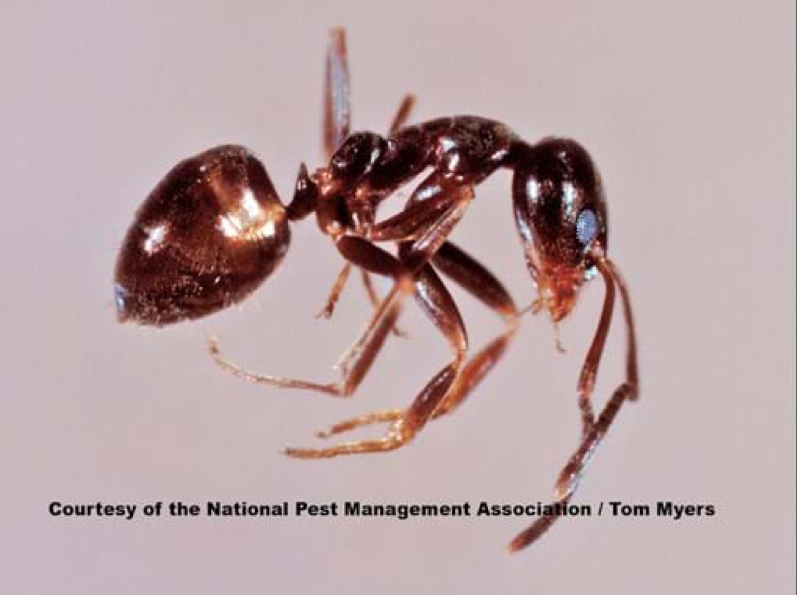
Argentine ants, originally from South America, are now prevalent across most of the world’s continents and are one of the biggest pest problems for homeowners in California. You can recognize an Argentine ant by its dull brown color. Its body is about an eighth of an inch long, and they emit musty odors when they’re squashed. Argentine ants are known for their love of sweets, oils, and buds of plants. They also often form mutual relationships with certain insects that excrete honeydew, protecting these aphids so they can feed on the sweet liquid.
Carpenter Ants
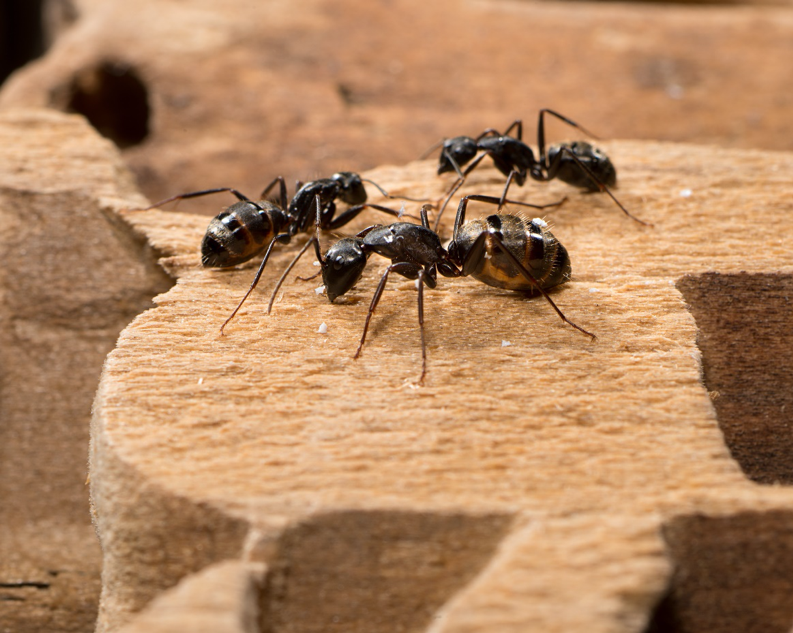
Carpenter ants are not only prevalent in homes throughout the Stockton area, but most homes across California and the United States. They stick to their namesake in that they love to burrow and nest in wet wood. These ants are black or brown and red and measure at about a quarter-inch to a half-inch long. As far as feeding goes, they love to dive into sweets and honeydew as well as other insects. Carpenter ants will mainly create their colonies in dead trees, firewood, tree stumps, or fence posts, but they can also establish themselves within your home in the window and door frames, subfloors, and hollow doors.
Pharaoh Ants
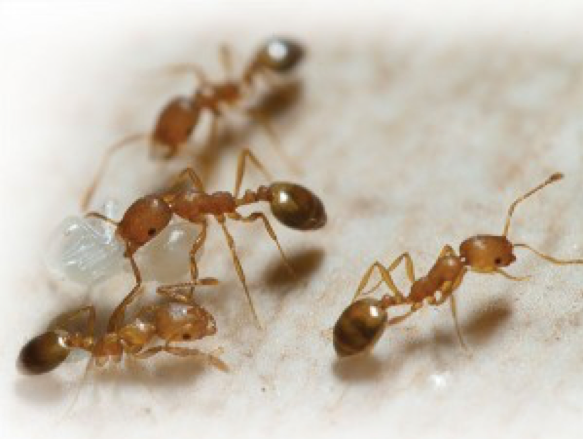
Pharaoh ants are considered huge nuisances in California because they are incredibly tiny. At just one-sixteenth of an inch long and super mobile, they can be hard to track down and kill. Their small size allows them to take up residence in tiny areas, like little cracks and crevices, walls and baseboards, and even inside insulation or clothing folds. These yellow-orange-colored ants love sweets, fats, proteins, and even other insects, so there’s not much food that doesn’t attract them. They are super comfortable living indoors, but if they’re disturbed, they’ll move to a new location quickly, making them hard to eliminate in large numbers.
Thief Ants
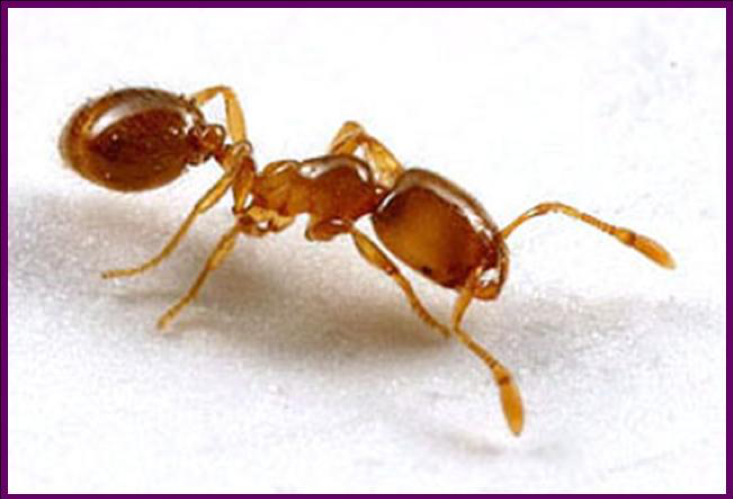
Thief ants are often a common enemy between people and other ant species. While they are certainly a nuisance to us humans, they make a habit of nesting near other ant nests and stealing their food and ant larvae. Thief ants are big fans of grease along with proteins, dead insects, and dead rodents. Their tiny size, which is anywhere from one-thirty-second of an inch long to one-eighth of an inch, allows them to invade packaged foods easily. They are yellowish-brown in color and often nest under rocks, in decaying wood, within wall and cabinet voids, and behind baseboards.
Why do I have ants in my house?
No one wants to find ants in their home, but it can happen to virtually any homeowner. Most ants create colonies where they can thrive which means they are constantly in search of a food source for survival, which can lead them into your home. Your kitchen is a perfect area for ants to infest with the potential for crumbs, pet food left in bowls, penetrable food packaging, and food such as fruit left out on tables and counter tops.
Ants typically live outside, sending scout ants away from the colony to search for food. These explorers are usually the ants that you find in your drain, on the floor, and around food items. Human food is also appealing to ants. Once the scout finds a food source, they signal other ants to follow his trail and continue to take food and bring it back to the colony. The number of ants following this same trail grows as their food source remains available.
Pet food bowls are a perfect way for small ants and other pests to thrive in your kitchen. Throw away uneaten pet food or lift it away from the floor into a sealed container at the end of each day to avoid this scenario. Ants and other pests can easily find pet food in poorly sealed containers such as the large paper bags that they come in. Frequently dumping water from their bowl can deter ants even further. Be sure to also clean the area around the bowls since dogs and cats aren’t always the tidiest when it comes to eating and drinking, and they create crumbs and water droplets that attract ants. If food bowls are left outdoors, close to the exterior of your home, it can also draw ants indoors.
Your kitchen is the most common place to find nuisance ants. They are attracted to resources such as food and water to keep the colony alive and growing. Inevitably, your family will end up dropping small crumbs after snacks and meals without knowing it. Unless you are hyper vigilant about cleaning and sweeping your floors, crumbs are bound to exist. Even if you use extreme care, keeping your kitchen floor clean, ants are also attracted to other food sources that you may not realize.
Should I be worried about ants in my house?
Ants are constantly moving back and forth, indoors and back out, picking up germs along the way. This means that bacteria living on the ground or in your pipes can surface and spread if ants cross your food. Tiny black ants (odorous house ants) are the most likely to cause infection because of their specific attraction to sugary and greasy foods such as cookies and chips. By crawling across your food, they can spread salmonella for you to ingest. That’s not to say that all food that ants have come into contact with are riddled with disease, but it’s better to be safe than sorry.
How can I prevent ants from getting into my home?
You can start preventing ants from getting into your home on your own, starting now! Try using the following tips to stop ants from accessing your home.
- Correct moisture problems (or poor moisture conditions) such as leaky roofs and blocked gutters.
- Correct poorly vented attics or crawl spaces.
- Store garbage cans in dry places (not under kitchen sinks). Empty garbage often and keep the area clean.
- Trim tree limbs so they don’t touch or hang over you house.
- Consider replacing or restoring rotted or water damaged wood.
- Inspect possible entry points, such as windows, and doorframes and pipes for small openings and caulk them.
- Examine firewood and remove infested logs. Use your firewood quickly once your bring them inside.
- Remove dead trees and stumps and repair-damaged trees.
- Inspect plants for ants before bringing them indoors. Remove plants that attract ants.
How can I get rid of ants in my kitchen and bathroom?
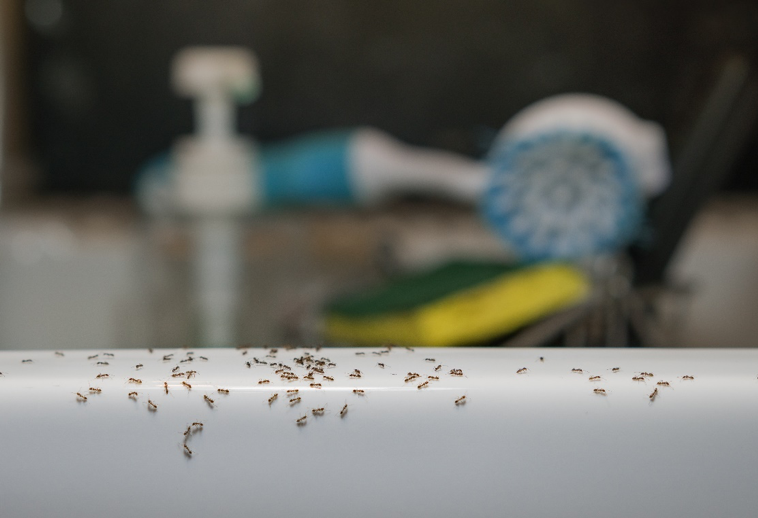
Nobody appreciates unwanted visitors, especially when those “visitors” are ants crawling along your countertops while you have guests over for dinner. With the internet busting at its seams with various DIY tactics and tricks for anything and everything, what does it take to make ant DIY remedies work? When it comes to the most common type of house invader, the odorous house ant, bait placement is critical. Where you place the bait can determine if it will be a success or not. Just like spraying repellents, bait placement along ant trails (that include lines and edges) would be the first place to start. Follow the edges along baseboards and place your bait in a corner along that baseboard. You may also find ants crawling along the edges of your backsplash, if this is the case, place bait near those edges. If you already know the ant trail, start there. For instance, if you know you’re seeing ants in your kitchen near your dishwasher, perhaps start by spraying along the baseboards leading to that location. If there are any cracks or crevices, be sure to include those because they might be entry points for the ants. The most common reason DIY ant control fails is the misplacement or incorrect application of products. If you can’t get ants under control, contact a pest control professional.
The best way to get rid of ants in your home is to call AAI Pest Control for professional ant removal and ant prevention services. Call us or fill out the contact form on this page to get started!
What Are Ants? Professional Pest Control Services in Tracy CA
Serving



